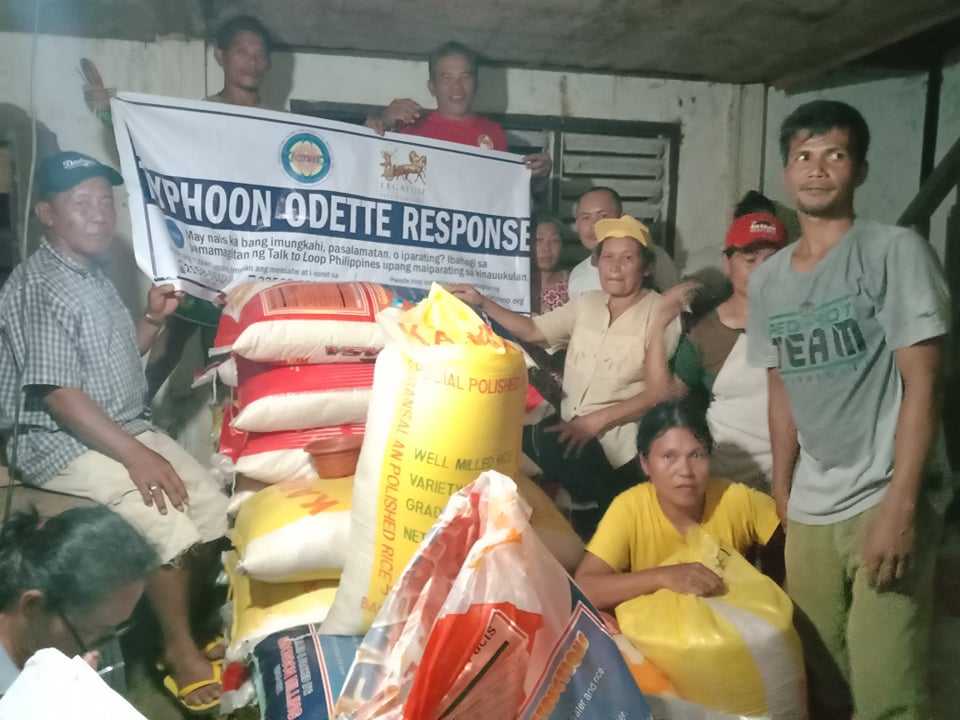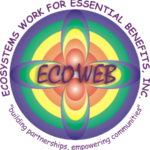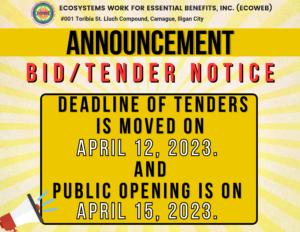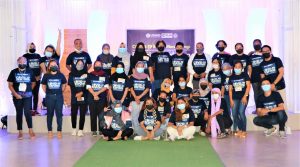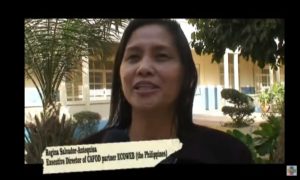Capturing learning from a Typhoon Odette Community-led Humanitarian Action
Busao, Maribojoc, Bohol is proof that Community Led Response works; it is also a testament that the community can improve on the processes and protocols we taught them.
The SCLR Project in Busao facilitated by Ecoweb with funding support from Help-Germany and Legatum Limited Foundation started after the Barangay Officials and Parish Council sent a request for help after the barangay was devastated by ST Odette/Rai on December 16, 2021, and communicated by Mr. Jose Jugo, Jr, a teacher and church leader.
Located in the boundary between Maribojoc and Antequera, Bohol, Busao is a floodplain, sitting at the valley between Abatan River and the Busao Hills. With a population of 146 households, Busao lost many houses and farms due to the flood that was estimated to have reached 20 feet.
Being in a floodplain, the residents of Busao are used to the river overflowing. In fact, this makes the rice field very fertile. But Odette caught them by surprise. The wind was ferocious, but not as much as the flashflood that washed away houses, and inundated all the rice and coconut fields. One person died, caught in the debris. The rest of the village survived, but barely.
(Typhoon Odette reduced the houses in Busao, Maribojoc, Bohol into rubbles like this house of Mauricio Bala)
The day after the typhoon, when Duyog Marawi/ECOWEB representatives did an ocular inspection, the village people were still in a state of shock. Houses were covered in mud, debris stopped people from moving around, children were still recovering from a close encounter with hypothermia.
It was this condition that motivated the local community to find ways to help each other.
On December 25, 2021 – nine days after landfall, 10 Parish Volunteers were oriented in SCLR and 5 young people were deployed for house visitation. 103 most affected and flooded families were visited – kumustahan, profiling, and assessment were done. Later, they were provided with Food Packs worth 400 pesos. They met and decided to buy local from the market – rice, dried fish, and vegetables instead of the usual canned goods and noodles. The parish supplemented the budget for 3 more families since the approved budget was only for 100 households.
A week later, during the consolidation meeting, it was agreed that Shelter Assistance is the most urgent need since it was raining and many families were at risk. SCLR Volunteers identified the most at risk households. It was signed by the Parish Priest.
A highlight of the volunteers processing was their spontaneous decision to add one more vulnerability criteria aside from poverty, PWD, Senior Citizen, pregnant women, etc. They added, Walay lain kasandigan. No one else to lean on. This made beneficiary selection easier because all volunteers know their neighbors, and they are aware of their conditions in life.
The volunteers decided to have 20 beneficiaries for the roofing and repair after consultation with the Barangay Local Government Unit and the Parish Pastoral Council. It was crucial for them to consult both government and church since these are the ones who can help them explain to the community the reason for these choices.
Another highlight is when they decided that instead of equal sharing, Batch 1 will be for those who needed roofing assistance only so that they will be protected from the rain. Batch 2 will be assessed per house with the guidance of the carpenter. Each household was given a budget ceiling, and they decided what to prioritize, because some of them have access to materials like cocolumber.
Teams were also formed to handle procurement, distribution and documentation.
It took them a long time to do the assessment for valid reasons such as weather and lack of availability. When they finished, the procurement took more than two weeks because the local supplier run out of the required materials.
But in the end, the most vulnerable and at risk families were given satisfactory assistance to improve their safety and protection.
What Worked?
Harnessing the contribution of already-existing local organizations works. There was no need to call for volunteers, or to organize a team. The Parish Youth Volunteers have always been active in community engagements. Given that Odette disrupted their schedules, they had available time and needed a venue to process their traumatic experiences.
Also, organizations like this have established their sense of trust and authority in the community.
Volunteer management in Busao included five elements – psychosocial processing, coaching and mentoring, logistical support, monitoring, and learning exercises. These five elements provided a strong motivation for them to do very difficult jobs that required them to be patient especially in dealing with irate and emotional families.
It also worked because the teams were trained to use a culture-based psychosocial approach. We called our visits “panumbalay” – the traditional practice of neighbors visiting one another and know that is happening. It is a form of caring. Thus, we did not call it profiling or interview. Our volunteers simply knocked on the houses and said, “Ayo, manumbalay mi”.
Listening was also a crucial element. The Do No Harm principle reminds the volunteers that we listen so that we can help avoid conflicts in the community.
The choice of a local faith-based organization – the Parish Youth Ministry –
What Didn’t
It seemed too ambitious to put a definite timeline to a S/CLR process, post landfall. Not just because logistics and communications posed. The trauma reduced people’s mobility and ability to respond quickly. Volunteers easily get tired in absorbing people’s emotions as well.
While having a timeline is essential, the fluidity and flexibility must be allowed.
What Needs to be changed or improved?
The volunteer management must include volunteer care. These are people not used to crises and are adjusting to the rhythm of emergency response. Volunteer care may include simple sessions on psychosocial support, or a health break, or a recreation day for all.
